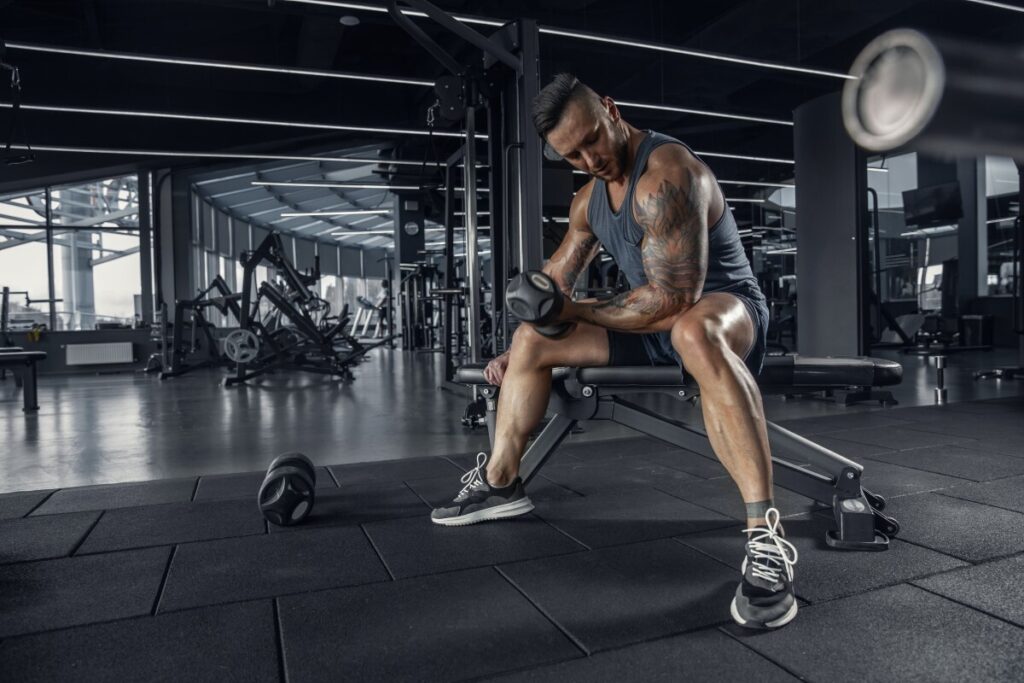KRAV MAGa
learn the most effective
SELF DEFENSE SYSTEM
IN THE WORLD
Based on natural movements, instinctive reactions, and real-life situations, Krav Maga has saved thousands of lives. Originally created during WWII to address street violence in Europe, Krav Maga is a powerful tool anyone can learn to stay safe and feel empowered.
Stay in the loop! SING UP for our email list
Why Krav MAga ?

Problem/Solution
Lorem ipsum dolor sit amet, consectetur adipiscing elit. Ut elit tellus, luctus nec ullamcorper mattis, pulvinar dapibus leo.
Why You Should Join Us!
Strength & Health
Krav Maga offers a full-body workout that boosts cardiovascular fitness, agility, strength, and flexibility. Its intense movements engage major muscle groups, enhancing endurance and physical conditioning. You’ll also improve mental sharpness, quick decision-making, and situational awareness. Krav Maga builds confidence, reduces stress, and fosters discipline, perseverance, and resilience, empowering you for real-world threats and a safer, more confident life
satefy
Krav Maga boosts personal safety by teaching practical self-defense techniques for real-world threats. Training prepares you to respond quickly and effectively to dangers, including armed attackers or multiple assailants. With a focus on practicality, Krav Maga enhances situational awareness, builds confidence, and empowers you to stay safe and secure.
self-confidence
Krav Maga boosts self-confidence by teaching practical self-defense skills for real-world situations. Training empowers you to protect yourself and others, enhancing personal safety and resilience. The supportive environment fosters self-esteem, assertiveness, and mental toughness, leading to a more confident, self-assured approach to life.
What people say:
training Highlights:
Unlike martial arts and combat sports Krav Maga teaches you to solve situations were more than one aggressor is present. An often ignored reality.
Learn to protect your loved ones using the very same techniques employed by presidential guards, special operations officers, and elite security teams around the world.
From threats at large distance, to kicking, striking, grappling, and ground fighting. Acquire powerful and adaptive combative skills applicable to any situation.
Learn to use your backpack, chair, keychain, and other common objects to solve threatening situations.
Incorporate simple yet effective reactions into your instinctive response. Avoid limiting your mind and body to a time and point bounded mentality.
Learn how to solve threats and attacks with different kinds of weapons. From stick like and sharp objects to fire arms. Keeping safety as priority.
Learn how to solve violent situations in elevators, bus stops, trains, bars, meeting rooms, and other spaces you frequent in a daily basis.
Learn to how react to violent situations based on your location, abilities, situation, accompanying parties, and most importantly prioritizing your life.
Train with male and female partners of all physical builds. Master your technique and increase your strength against any kind of potential aggressor in the street.
Krav Maga - FAQ's
Krav Maga, pronounced as ‘krav ma-gah’, translates from the Hebrew words: קרב מגע
– Krav (קרב): combat or battle.
– Maga (מגע): contact.
Thus, Krav maga can be translated to English as ‘Contact Combat‘. Referring to its focus on real-world
self-defense situations, and its extreme efficiency.
Krav Maga is originated in Israel. It was developed during the late 1930s and 1940s by Slovakian-Israeli martial artist Imi Lichtenfeld. Initially, Lichtenfeld created Krav Maga to help Jewish communities protect themselves from anti-Semitic violence in Bratislava, a city then in Czechoslovakia and now the capital of Slovakia. As a skilled boxer, wrestler, and gymnast, Lichtenfeld drew upon his martial arts experience and street-fighting encounters to devise an effective defense system.
In the 1940s, Imi Lichtenfeld began refining and teaching Krav Maga to the Israeli military, including the Haganah, the precursor to the Israel Defense Forces (IDF). The practicality and efficiency of Krav Maga made it suitable for both military and civilian self-defense. Over time, Krav Maga evolved and gained popularity worldwide due to its focus on instinctive movements, practical techniques, and adaptability to real-life threatening situations. Today, Krav Maga is taught internationally and is recognized as one of the most efficient and effective self-defense systems, emphasizing simplicity and effectiveness in a variety of circumstances.
Imre “Imi” Lichtenfeld, often simply known as Imi, was a Slovakian-Israeli martial artist and the founder of Krav Maga. He was born on May 26, 1910, in Budapest, Hungary, and later moved to Bratislava, which was then part of Czechoslovakia and is now the capital of Slovakia. Imi came from a family with a background in physical fitness, martial arts, and law enforcement.
During the 1930s and 1940s, Imi Lichtenfeld developed Krav Maga as a practical and efficient self-defense system. He drew upon his experiences as a wrestler, boxer, gymnast, and street fighter to create a system that focused on real-world combat and self-defense. Initially, he developed Krav Maga to help protect Jewish communities from anti-Semitic violence.
Imi Lichtenfeld’s expertise in hand-to-hand combat and self-defense became highly valuable during World War II when he served as an instructor for the Haganah, a Jewish paramilitary organization. After Israel gained independence in 1948, he continued to adapt and refine Krav Maga for military and civilian use. Imi Lichtenfeld’s legacy lives on through Krav Maga, which has become a widely practiced and respected self-defense system used by military, law enforcement, and civilians around the world. He passed away on January 9, 1998, in Netanya, Israel.
Krav Maga is primarily a self-defense and hand-to-hand combat system focused on practicality and real-world applications. Unlike traditional martial arts like karate or taekwondo, Krav Maga does not typically have a competitive sporting aspect or formal championships.
The emphasis in Krav Maga is on training individuals to defend themselves in various threatening situations, rather than scoring points or engaging in competitive matches. Training involves techniques for neutralizing threats, disarming attackers, and ensuring personal safety.
However, there are events such as seminars, workshops, and demonstrations where Krav Maga practitioners can showcase their skills, share knowledge, and learn from each other. These events may include simulated scenarios and drills to apply Krav Maga techniques in practical settings.
Krav Maga was primarily utilized by the Israeli military and law enforcement agencies. However, over the years, it has evolved into a global phenomenon and is now taught and practiced by civilians, law enforcement officers, security personnel, military units, and various specialized groups.
Civilians: Krav Maga is widely taught to civilians for self-defense purposes. Its practical and intuitive techniques make it appealing to individuals seeking to enhance their personal safety and self-defense skills.
Law Enforcement: Law enforcement agencies in multiple countries have incorporated Krav Maga into their training programs. The system’s focus on real-world situations and quick, effective responses align well with the needs of police officers and other law enforcement professionals.
Military: Krav Maga remains a fundamental part of the Israeli Defense Forces (IDF) training, and it’s also taught to military personnel in various countries around the world due to its effectiveness in close-quarters combat and self-defense.
Security Personnel: Private security firms and personnel tasked with security duties often receive Krav Maga training to improve their ability to handle potentially dangerous situations and protect the individuals or facilities they are responsible for safeguarding.
Specialized Units: Special forces and elite military units in several countries incorporate Krav Maga techniques into their training due to its adaptability, efficiency, and focus on practical combat scenarios.
Absolutely, you can definitely train in Krav Maga even if you have no prior experience in martial arts or combat sports. In fact, Krav Maga is designed to be accessible to individuals with varying levels of fitness and experience. It’s particularly well-suited for beginners, as it prioritizes simplicity, practicality, and effectiveness in real-world situations.
Here are some steps to get started with Krav Maga:
Find a Certified Instructor or Training Center: Look for a reputable Krav Maga training center or instructor in your area. Ensure that the instructor is certified and has experience teaching Krav Maga to beginners.
Attend Classes: Begin by attending introductory or beginner classes. In these classes, you’ll learn the basic techniques, movements, and principles of Krav Maga.
Start Slow: Krav Maga instructors understand that beginners may have no prior martial arts experience. They will start with foundational movements, strikes, and defenses, gradually building up your skills and confidence.
Focus on Fundamentals: Pay close attention to the fundamental principles of Krav Maga, including situational awareness, efficient striking, and common self-defense scenarios.
Remember, Krav Maga is about developing practical self-defense skills and improving your ability to protect yourself in real-life situations. It’s not about competition or martial arts tournaments. Stay focused, dedicated, and open to learning, and you’ll progress in Krav Maga regardless of your initial experience level.
Certainly! Krav Maga can be practiced safely when guided by qualified and experienced instructors in a controlled setting. Choosing certified Krav Maga instructors who prioritize student safety and provide appropriate guidance and supervision during training is crucial.
In Krav Maga classes, you typically start with basic movements and techniques, progressively advancing to more complex skills, ensuring you’re comfortable and proficient at each stage before moving on. The training includes scenarios and drills mimicking real-life situations to enhance your reactions while minimizing injury risk. The focus in Krav Maga is on swift, effective defense and maintaining control of situations, promoting safety.
Protective gear, like mouthguards and gloves, is often used during partner drills and sparring. Instructors adapt training to individual abilities, encouraging open communication about concerns, discomfort, or injuries. It’s important to communicate any pre-existing injuries or medical conditions to your instructor before starting Krav Maga. Listening to your body and informing instructors if something feels wrong helps maintain a safe and enjoyable learning experience.
Krav Maga is suitable for individuals of varying fitness and ages, including those not in optimal shape. Its adaptability to different bodies and fitness levels is notable. Krav Maga emphasizes practical and efficient self-defense, leveraging natural movements regardless of strength or size. Training prioritizes personal safety in real-life situations, adjusting to your abilities. Classes start with basic movements and progress gradually. Instructors modify techniques for your capabilities.
Situational awareness and avoiding confrontations are key focuses, beneficial for everyone. Regular practice improves fitness, making it suitable for those looking to get in shape. Krav Maga fosters a supportive, inclusive environment, respecting individual limits. Before starting, consulting your healthcare provider is advisable, especially with pre-existing conditions. Ultimately, Krav Maga builds confidence in self-defense, a valuable pursuit for all ages and fitness levels.
Krav Maga focuses on practical self-defense for real-world situations, emphasizing efficiency and swift threat neutralization. It incorporates a range of techniques for strikes, kicks, joint locks, and defense against various attacks. Training involves scenarios preparing for real-life confrontations, with no formal competitions. Krav Maga uniquely encompasses the use of weapons such as sticks and knives, and it’s tailored to handle multiple aggressors and protect third parties, making it a comprehensive self-defense system.
In contrast, BJJ, MMA, Muay Thai, and Boxing emphasize sport, competition, and specific fighting techniques within regulated environments. BJJ revolves around ground-based grappling and submissions, MMA integrates various martial arts for competition, Muay Thai emphasizes striking and clinch work, and Boxing centers on striking techniques with fists.
The training approach, rules, and philosophy differ. Krav Maga prioritizes survival and quick decision-making, while the others emphasize technique, strategy, and sportsmanship within specific rules. The choice depends on goals, preferences, and context, with cross-training often beneficial for a well-rounded skill set.
wait no more! Start training NOW!
2650
SQM.
320+
Machines
354
Trainers
50
Metres Pool
100
M. Track
Testimonials
magna augue eget diam. Vestibulum ante ipsum primis in faucibus orci luctus
et ultrices posuere cubilia Curae; Morbi lacinia molestie dui.
Athelete Gym Facts
Quisque cursus, metus vitae pharetra auctor, sem massa mattis sem, at interdum augue eget diam.
Get out of your
Comfort Zone
Vestibulum ante ipsum primis in faucibus orci.
Keep in Touch!

FL, Street Name,
New York – 54785
(01) 111 222 33 44
(01) 555 666 77 88
info@someweb.com
home@someweb.com









